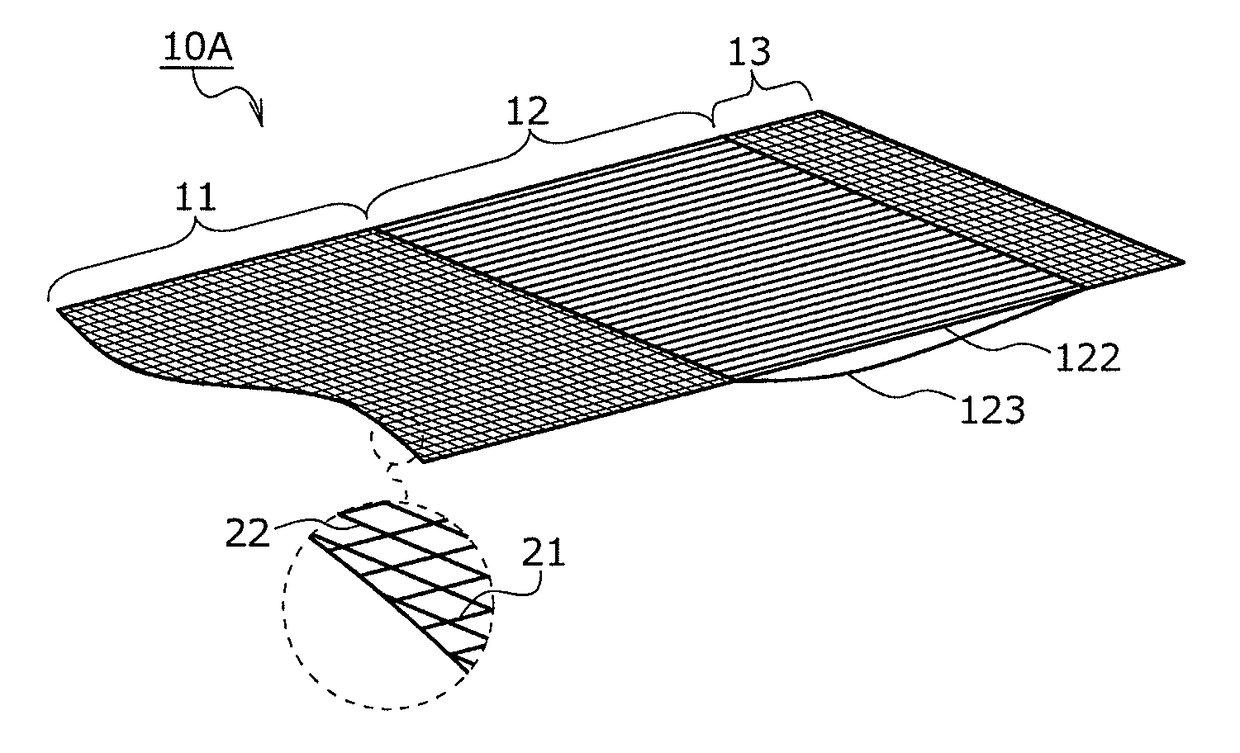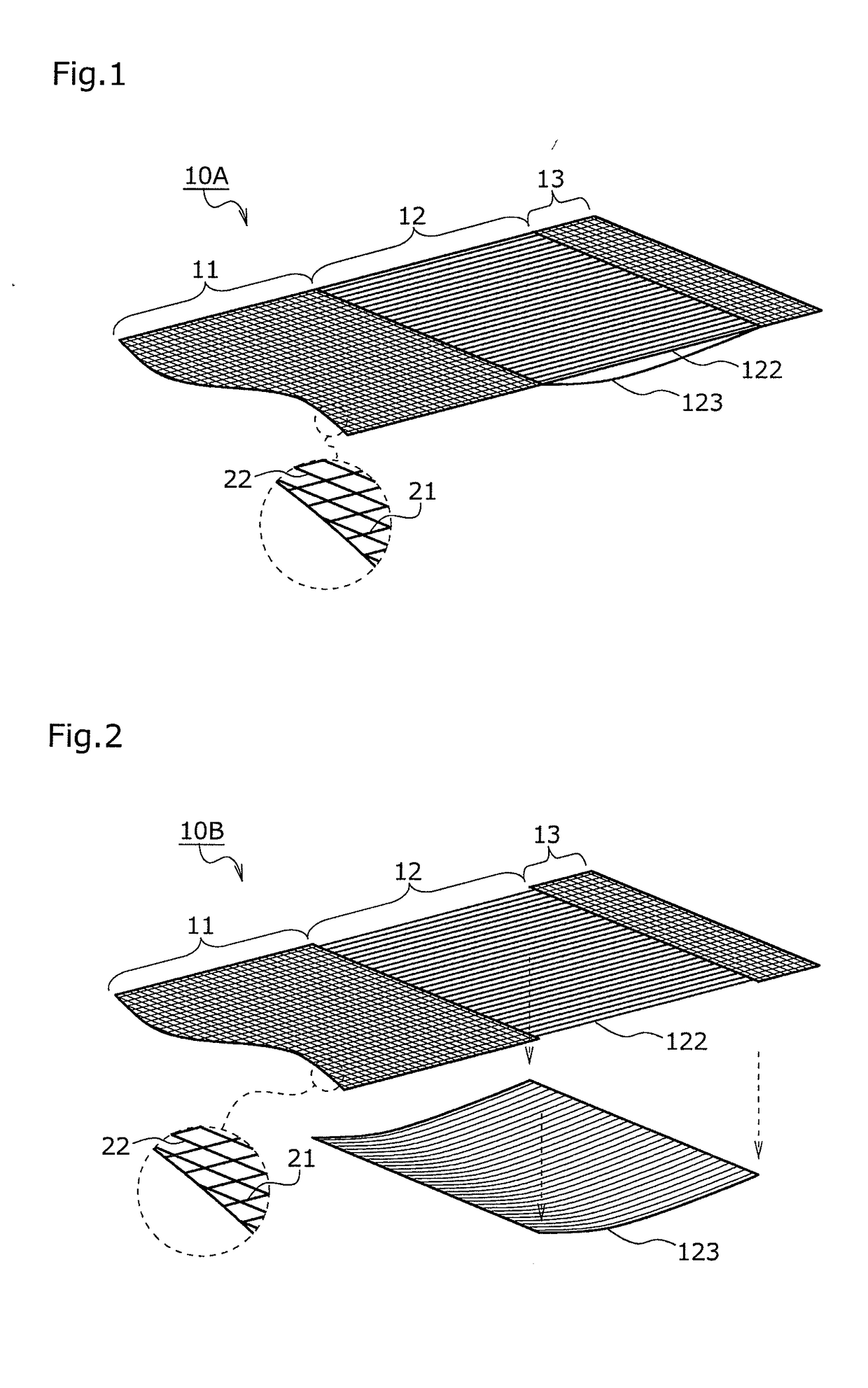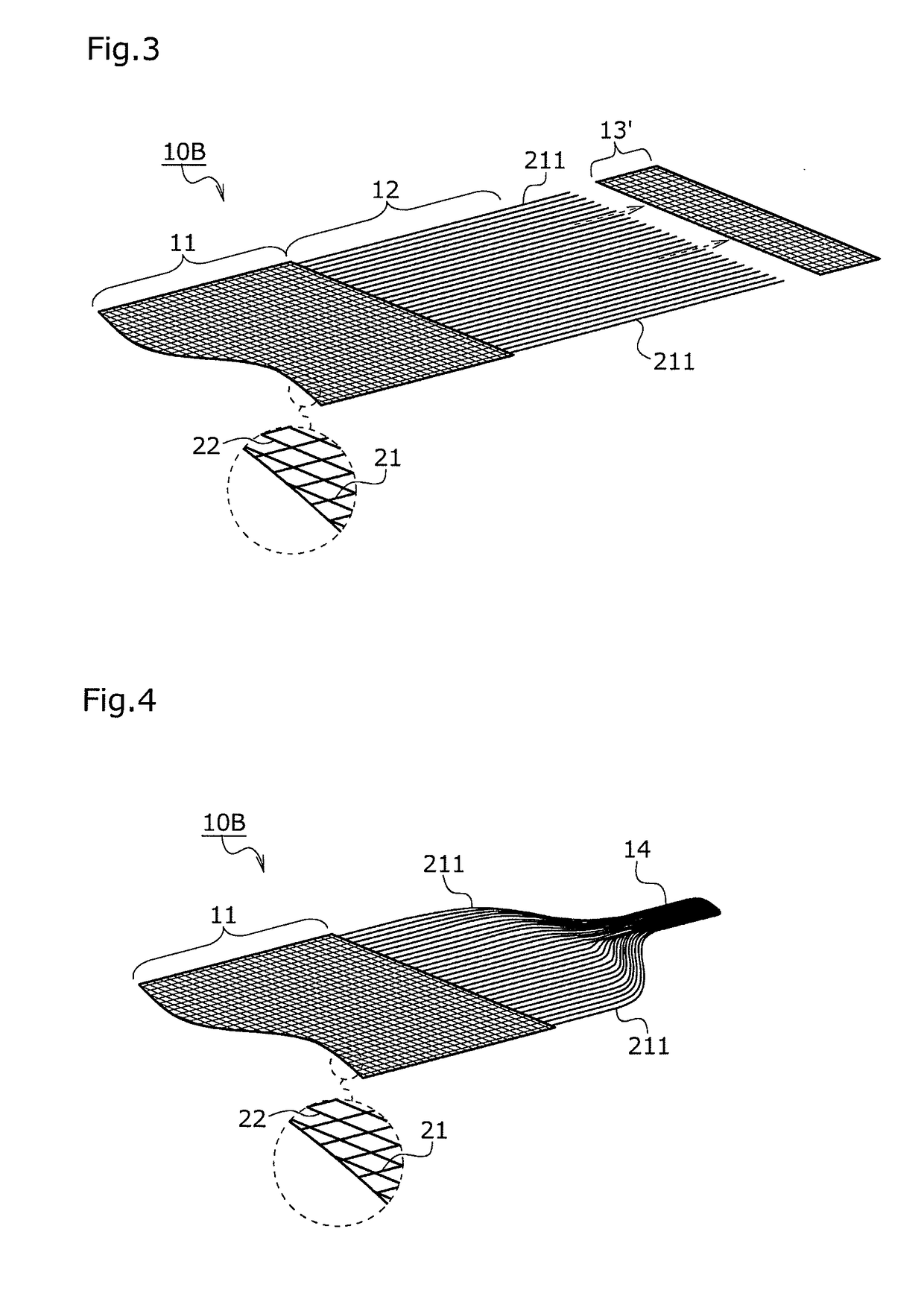Woven fabric, method for manufacturing design woven fabric and method for manufacturing interior material
a technology of woven fabric and interior material, which is applied in the direction of light-guided instruments, lighting and heating equipment, and fibre light guides, etc., can solve the problems of optical fiber damage risk, and achieve the flexibility of the longitudinal direction of the non-light-guiding yarn, and the flexibility of the entire textile
- Summary
- Abstract
- Description
- Claims
- Application Information
AI Technical Summary
Benefits of technology
Problems solved by technology
Method used
Image
Examples
embodiment 1
[0118]The woven fabric 10A shown in FIG. 1 is a woven fabric woven from a first constituent yarn 21 as a warp and a second constituent yarn 22 as a weft. However, it is not limited which of the first and second constituent yarns 21 and 22 is the warp and which of the first and second constituent yarns 21 and 22 is the weft.
[0119]The first constituent yarn 21 comprises an OF yarn 211 (side emission type optical fiber yarn) and a non-light guiding yarn 212. On the other hand, the second constituent yarn 22 consists only of a non-light guiding yarn 222. The non-light guiding yarns 212 and 222 are light shielding yarns which can exert the light shielding performance to the OF yarns 211, and the non-light guiding yarn 212 is configured to have fineness smaller than that of the non-light guiding yarn 222.
[0120]The woven fabric 10A has a first region 11 in which the first constituent yarn 21 and the second constituent yarn 22 are woven in one layer. The first region 11 is a design region. ...
embodiment 2
[0127]A woven fabric 10A shown in FIG. 5 is different from the woven fabric 10A of Embodiment 1 in comprising a front protecting layer 121, and is identical therewith in other respects.
[0128]The woven fabric 10A has a second region 12 positioned adjacent to the first region 11. In the second region, the first and second constituent yarns 21 and 22 are woven in three separable layers. The three separable layers are laminated in the order of: the front protecting layer 121, the optical fiber layer 122 and the back protecting layer 123. These three layers are formed by double weaving, and the front and back protecting layers 121 and 123 are woven from the non-light guiding yarns 212 and 222, respectively. Also, the optical fiber layer 122 is a layer formed only of the OF yarns 211.
[0129]In FIG. 5, the front protecting layer 121 and the back protecting layer 123 are expressed in forms loosened to the design surface side and to the non-design surface side, respectively, for convenience s...
PUM
| Property | Measurement | Unit |
|---|---|---|
| diameter | aaaaa | aaaaa |
| diameter | aaaaa | aaaaa |
| diameter | aaaaa | aaaaa |
Abstract
Description
Claims
Application Information
 Login to View More
Login to View More - R&D
- Intellectual Property
- Life Sciences
- Materials
- Tech Scout
- Unparalleled Data Quality
- Higher Quality Content
- 60% Fewer Hallucinations
Browse by: Latest US Patents, China's latest patents, Technical Efficacy Thesaurus, Application Domain, Technology Topic, Popular Technical Reports.
© 2025 PatSnap. All rights reserved.Legal|Privacy policy|Modern Slavery Act Transparency Statement|Sitemap|About US| Contact US: help@patsnap.com



